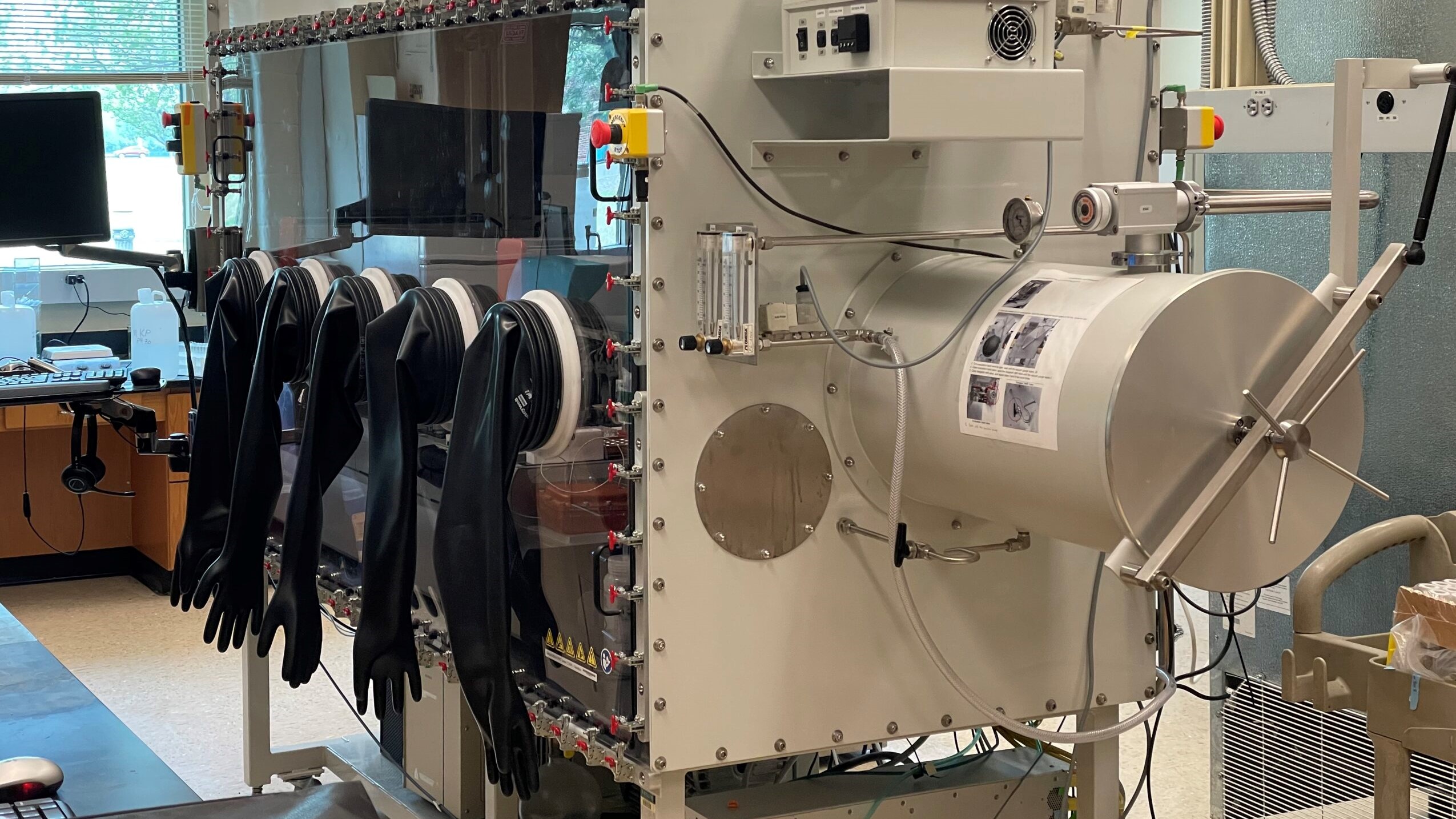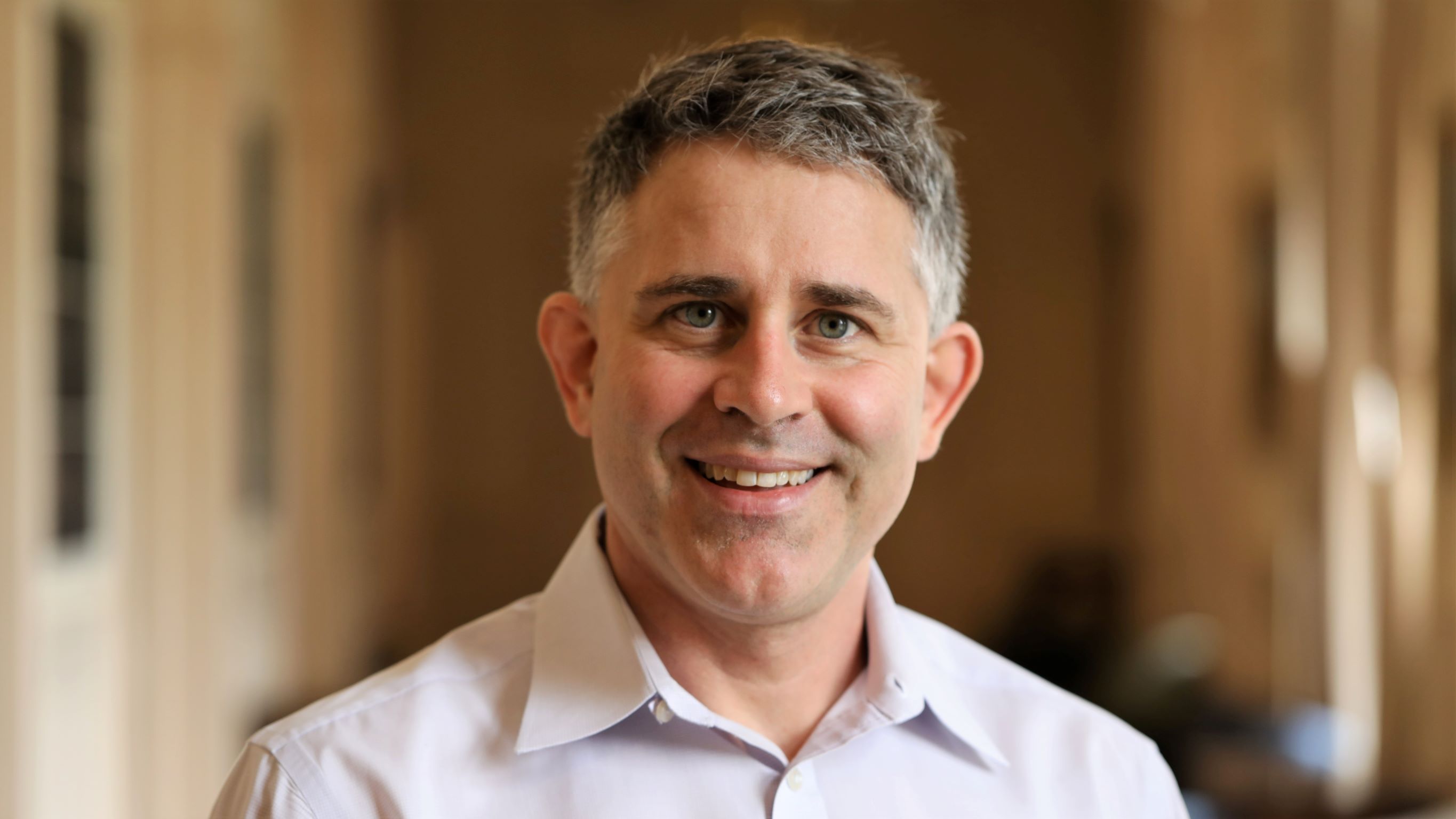Baylor Chemist Leads $1.3 Million Research Project to Make Chemistry Labs and Concepts Accessible to Blind and Low Vision Students


National Institutes of Health funds a first-of-its-kind effort, led by chemistry/biochemistry professor Bryan Shaw, to provide tools eliminating barriers that exclude students with blindness from pursuing chemistry education and experiences
Media Contact: Lori Fogleman, Baylor University Media and Public Relations, 254-709-5959
Follow us on Twitter: @BaylorUMedia
By Derek Smith, Baylor University Marketing & Communications
WACO, Texas (July 13, 2022) – Students with blindness and low vision (BLV) have long faced barriers to the study and discipline of chemistry, often due to the long-standing inaccessibility of science labs to people with disabilities, a lack of non-visual educational materials and technologies not yet optimized for those with visual impairments. To rectify this, a Baylor University chemist has been awarded a $1.3 million grant from the National Institutes of Health (NIH) to take dramatic steps to open chemistry classes and labs to students with blindness or low vision.
Bryan Shaw, Ph.D., professor of chemistry and biochemistry at Baylor, received the NIH grant for a first-of-its-kind early intervention project that removes barriers to laboratory work and provides tactile chemistry education materials and equipment. Combining high-tech and low-tech approaches, the project blends robotics and technology with educational materials and “lab hacks” that enable students with blindness to take part in the same roles and routines as their sighted counterparts.
“Children with blindness are typically put in a corner very early in terms of science education, and they’re excluded systemically from chemistry,” Shaw said. “Some of the reasons for exclusion are safety concerns or because the lab has been designed only for people with eyesight. But much of chemistry and its technology can be modified for people with blindness. This grant will enable us to help these students work with the best equipment, visualize the highest resolution imagery and make labs accessible while doing our own research as well.”
The five-year grant – in partnership with the Texas School for the Blind and Visually Impaired (TSBVI) in Austin – is funded through the NIH’s Science Education Partnership Award (SEPA) program, which promotes science, technology, engineering and math (STEM) projects for children in grades K-12.
“Chemistry is the central science. If you keep people out of chemistry, you keep them out of most other types of science,” Shaw said. “This is the tip of the spear in terms of promoting inclusion into the sciences.”
Shaw and his collaborators are focusing their project initially on high school students by developing a pilot program for 150 TSBVI students to participate in education and curriculum and train on materials on both the school campus and within Shaw’s lab at Baylor. The pilot is expected to launch this fall, with the full program expected to begin in spring 2023 through 2027. In the future, the team hopes to scale the program to include resources for children just beginning the study of science.
“TSBVI is excited to collaborate with Baylor’s NIH project, which will give blind high school students access to learning science concepts in innovative ways and ultimately open the possibilities for more blind individuals to pursue careers in the field of chemistry,” said Angela Wolf, TSBVI teacher and short-term projects lead.
High-tech resources and low-tech “hacks”
From the complexity of robotics and 3D printing to the simplicity of ready-made materials like parafilm, the NIH is supporting a systemic approach to preparing students for the lab and supplying them with accessible materials and equipment when they get there. Resources developed through the project will enable students to operate equipment, safely measure and work with hazardous materials, navigate the challenge of gathering and recording data, view or feel the shapes of molecules and more.
“To make the lab accessible requires the development of a number of technologies for use. A lot of funding is going to create those resources, such as lithophanes, for example,” Shaw said. “Lithophanes are an artistic medium that we are re-purposing as a data format that enables blind and sighted persons to examine and share the same type of data. And then we have what we call simple ‘lab hacks’ — solving common problems in the labs with readily-available materials.”
These resources include:
- Lithophanes: Likely created in China as early as the sixth century and popularized in Europe in the 1800s, lithophanes are tactile pictures made from translucent materials (first porcelain, now plastic) that can be seen clearly when backlit or visualized by touch. Popular with 3D printers, lithophanes will be used to print tactile models that allow individuals with BLV to feel everything from microscope images and graphical data to textbook images and molecules. Early testing has shown that both blind and sighted but blindfolded individuals can interpret lithophane data as readily as fully sighted people interpret data seen on a computer screen.
- Robotics: High-tech robotics will enable students to perform lab functions in a safe environment, such as precisely weighing powder, dispensing liquid, or heating and cooling test tubes in a blast-proof, airtight glovebox.
- 3D printing: Shaw and his team will create 3D printed models of all equipment students will use in the Baylor labs. TSBVI students will study these models on their own campus to become familiar with the materials and preparing them ahead of arriving at the Baylor labs, where they will program and work with robotics or other equipment and collect and measure data. Additionally, Baylor’s printers will create a high volume of tactile images for teaching and instruction.
- Lab hacks: Touch screens can be more difficult to use than instruments with raised buttons for an individual with BLV. An example of a lab hack is using parafilm – a waxy, see-through adhesive comparable to plastic wrap and present in every chemistry lab – which can be printed with braille and affixed to equipment while still enabling the normal operation of the touch-screen functions.
- Talking meters: The Baylor lab will be equipped with talking pH meters, thermometers and more.
- “Be My Eyes” app: This app and service allows students to have a sighted person at the other end of their phone read measurements, tell them what is in a lab refrigerator and more.
For Shaw, the project is personal as well as professional. His son, Noah, was diagnosed as an infant with retinoblastoma, an aggressive pediatric eye cancer. Now 14, Noah is thriving despite losing sight in one eye. That experience has led to a distinct thread throughout Shaw’s research.
Inspired to help others detect eye disease early, Shaw collaborated with Greg Hamerly, Ph.D., associate professor of computer science at Baylor, to develop the White Eye Detector app, a gold-standard tool enabling parents to screen for pediatric eye disease. Last year, another breakthrough study led by Shaw was published in Science Advances, focused on making science more accessible through the creation of 3D gelatin models to improve visualization of protein molecules through oral stereognosis, or visualization of 3D shapes via the tongue and lips. Students recognized structures by mouth at 85.59% accuracy using the candy-like pieces, similar to recognition by eyesight using computer animation.
“As an educator, when you have students who want to learn badly, you almost don’t need to do very much—just point them in the right direction. You provide them with material, and soon they’re off to the races,” Shaw said. “But with children who have blindness, you can have extremely gifted, brilliant children who want to learn but can’t because the tools to teach them are not currently there.”
Shaw’s research team on the NIH grant includes Baylor colleagues John Wood, Ph.D., The Robert A. Welch Distinguished Professor of Chemistry and Biochemistry, and Tonya Davis, Ph.D., professor of educational psychology, along with Mona Minkara, Ph.D., assistant professor of bioengineering at Northeastern University. Minkara is one of three blind individuals on Shaw’s team, along with Cary Supalo, Ph.D., and Hoby Wedler, Ph.D., entrepreneurs and educators who both consult on the project.
Leadership in lab accessibility
When Shaw wrote the grant, the first image he included in the application was a panel of 10 people: mathematicians, painters, musicians, explorers, athletes, mountain climbers and more, all of whom reached the top of their craft despite being blind from an early age.
“Then, I left one box empty, with a big question mark,” Shaw said. “That box represented experimental chemists—because it hasn’t happened yet. There are theoretical chemists with early blindness, but not experimental ones. That’s one area we’re trying to address, and the NIH responded in a big way.”
Baylor will be the first University to approach the issue of lab accessibility for the blind systemically and also the first to apply technologies like lithophanes to scientific education and discovery.
“As an R1 Christian research university, making science accessible through rigorous work motivated by compassion and the pursuit of human flourishing is a fit natural to Baylor faculty and students,” said Baylor Provost Nancy Brickhouse, Ph.D. “We are so grateful for the research Dr. Shaw and his team are doing to discover ways of making research labs accessible to visually impaired scientists and researchers. This research is leading the way in Baylor’s growing research portfolio in disabilities research.”
“This is a people-motivated endeavor,” Shaw said. “As we attract people with blindness and train them to go on to become scientists, researchers and professors, it will grow our field and open doors that have until now been closed.”
ABOUT BAYLOR UNIVERSITY
Baylor University is a private Christian University and a nationally ranked Research 1 institution. The University provides a vibrant campus community for more than 20,000 students by blending interdisciplinary research with an international reputation for educational excellence and a faculty commitment to teaching and scholarship. Chartered in 1845 by the Republic of Texas through the efforts of Baptist pioneers, Baylor is the oldest continually operating University in Texas. Located in Waco, Baylor welcomes students from all 50 states and more than 90 countries to study a broad range of degrees among its 12 nationally recognized academic divisions.
ABOUT THE COLLEGE OF ARTS & SCIENCES AT BAYLOR UNIVERSITY
The College of Arts & Sciences is Baylor University’s largest academic division, consisting of 25 academic departments in the sciences, humanities, fine arts and social sciences, as well as 10 academic centers and institutes. The more than 5,000 courses taught in the College span topics from art and theatre to religion, philosophy, sociology and the natural sciences. Faculty conduct research around the world, and research on the undergraduate and graduate level is prevalent throughout all disciplines. Visit baylor.edu/artsandsciences.
ABOUT BAYLOR SCHOOL OF EDUCATION
For more than 100 years, Baylor educators have carried the mission and practices of the School of Education to classrooms and beyond as teachers, leaders in K12 and higher education, psychologists, professors, researchers, and more. With more than 60 full-time faculty members, the school’s growing research portfolio complements its long-standing commitment to excellence in teaching and student mentoring. Baylor’s undergraduate program in teacher education has earned national distinction for innovative partnerships with local schools that provide future teachers deep clinical preparation, while graduate programs culminating in both the Ed.D. and Ph.D. prepare outstanding leaders, teachers and clinicians through an intentional blend of theory and practice. Visit www.baylor.edu/SOE to learn more.